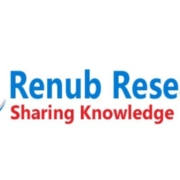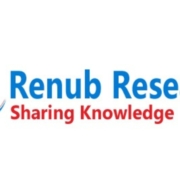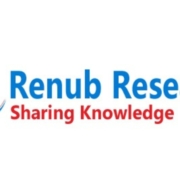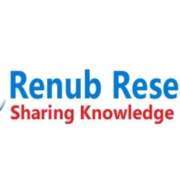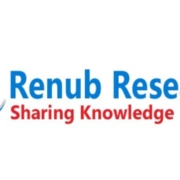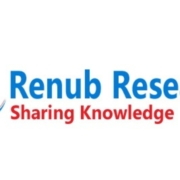Defibrillator Market Analysis
The global defibrillator market is experiencing steady growth and is projected to reach US$ 25.80 billion by 2033, up from US$ 13.74 billion in 2024, reflecting a CAGR of 7.25% during the forecast period from 2025 to 2033. This growth is fueled by multiple factors, including the increasing prevalence of cardiovascular diseases, rising public awareness about sudden cardiac arrest (SCA), expansion of ambulance services, and the growing installation of defibrillators in public access areas such as airports, sports facilities, and educational institutions. As heart-related conditions become more widespread, the role of defibrillators in emergency medical response continues to gain importance globally.
Full Access Report:https://www.renub.com/defibrillator-market-forecast-p.php
Market Overview
Cardiovascular diseases remain one of the leading causes of morbidity and mortality worldwide. According to the World Heart Report (2023), more than half a billion individuals globally were estimated to have cardiovascular disorders in 2021. The American Heart Association (2023) forecasts that over 12 million people worldwide will suffer from atrial fibrillation by 2030. Additionally, approximately 200 million people globally are affected by coronary artery disease (CAD), according to the British Heart Foundation Global Heart & Circulatory Diseases Factsheet (2024).
Defibrillators are critical in treating such life-threatening heart conditions. They are designed to deliver controlled electrical shocks to the heart, restoring a normal rhythm in cases of sudden cardiac arrest or irregular heartbeats such as atrial fibrillation. The timely use of defibrillators significantly improves survival rates by providing immediate assistance during cardiac emergencies. This makes them an indispensable component of emergency medical care, particularly in hospitals, ambulances, and public access locations.
Technological advancements and regulatory approvals are also shaping market growth. For instance, Element Science’s patch-based cardioverter defibrillator, approved in the UK and CE marked in Europe in January 2024, offers a wearable solution for individuals at risk of sudden cardiac arrest. Similarly, in October 2023, the FDA approved Medtronic plc’s Aurora EV-ICDTM MRI SureScanTM Extravascular Implantable Cardioverter-Defibrillator and Epsila EVTM MRI SureScanTM defibrillation lead, aimed at treating dangerously rapid heart rhythms. These innovations improve patient compliance and expand treatment options for individuals who may not be suitable candidates for traditional devices.
The rising aging population further strengthens demand for defibrillators. WHO estimates suggest that by 2050, the global population aged 60 and above will rise from 12% to 22%, equating to around 2.1 billion people. With age, the risk of cardiovascular diseases increases, making older individuals more susceptible to cardiac arrests. Defibrillators, therefore, play a crucial role in ensuring prompt life-saving interventions, particularly in emergency situations.
Growth Drivers for the Defibrillator Market
Aging Population and Chronic Illnesses
The global rise in age-related cardiovascular disorders is a major driver for the defibrillator market. Heart conditions such as CAD, atrial fibrillation, and heart failure are more prevalent in older adults, particularly those with chronic illnesses like diabetes and hypertension. Healthcare providers, senior living facilities, and home healthcare services increasingly invest in defibrillators to guarantee rapid response in emergencies, ensuring patient safety and higher survival rates.
Increasing Regulations and Compliance Requirements
Legislation across various countries mandates the presence of automated external defibrillators (AEDs) in workplaces, public venues, and educational institutions. Strong regulatory frameworks encourage compliance, driving the adoption of defibrillators across industries, including manufacturing and construction, to ensure workplace safety. These policies have created an environment where defibrillators are considered essential components of public health and emergency response infrastructure.
Rising Awareness of Heart Health
Public awareness campaigns and training programs have improved knowledge of sudden cardiac arrest (SCA) and the benefits of immediate intervention using defibrillators. Communities, schools, workplaces, and households are increasingly prioritizing the availability of AEDs. Educational efforts have demystified defibrillator use, enabling laypeople to operate these devices effectively, thereby boosting confidence and acceptance in emergency scenarios.
👉 Want to explore detailed market trends, segment insights, and forecasts? 🔗 Request Sample Report:https://www.renub.com/request-sample-page.php?gturl=defibrillator-market-forecast-p.php
Challenges in the Defibrillator Market
High Cost of Devices
One of the major constraints is the high cost of advanced defibrillators, including implantable cardioverter defibrillators (ICDs) and AEDs. These devices often come with significant expenses for training, maintenance, and battery replacement. High costs may restrict adoption, especially in low-resource settings and developing countries, limiting the widespread use of life-saving technology.
Lack of Awareness and Training
Despite increasing AED deployment in public areas, inadequate knowledge and training remain a barrier. Many individuals, including medical staff, school personnel, and bystanders, may hesitate to use defibrillators in emergencies due to uncertainty. Expanding CPR/AED training programs and conducting public awareness initiatives are critical for improving survival outcomes and enhancing defibrillator accessibility.
Product and Market Segmentation
Implantable Defibrillators (ICDs) are expected to dominate the global market. They continuously monitor heart rhythms and deliver immediate shocks during irregularities, providing real-time intervention. The rising incidence of cardiovascular disorders and ongoing technological innovations support the adoption of these devices. Research initiatives aim to improve functionality, extend battery life, and enhance patient comfort, making implantable defibrillators indispensable for high-risk patients.
External Defibrillators, including AEDs, are widely used in public spaces, hospitals, and ambulances. They are easy to operate and provide a critical safety net for individuals experiencing sudden cardiac arrest.
End-User Segmentation includes:
- Hospitals: Hospitals lead the market by using advanced defibrillators for emergency cardiac care. They drive innovation and adoption by investing in state-of-the-art devices.
- Pre-hospital Care & Ambulance Services: Rapid response and portable defibrillator deployment improve survival chances during emergencies.
- Public Access Market: AED installations in public venues enable bystander intervention in cardiac emergencies.
- Alternate Care Market: Clinics, urgent care centers, and rehabilitation facilities increasingly deploy defibrillators to enhance patient safety.
- Home Healthcare: Wearable and portable defibrillators allow at-risk patients to receive continuous monitoring and timely interventions.
Regional Market Insights
North America dominates the global defibrillator market due to a high prevalence of cardiovascular disorders, advanced healthcare infrastructure, and regulatory support. Major players like Medtronic, Philips, and Zoll offer a wide range of devices, from wearable defibrillators to ICDs and AEDs. In the United States alone, 20.5 million people are estimated to have CAD (National Institutes of Health, 2023), and 805,000 heart attacks occur annually (CDC, 2024). Risk factors include smoking, hypertension, and high cholesterol, with nearly 47% of Americans having at least one risk factor. The market is further fueled by increasing AED deployment in schools, workplaces, and public spaces.
Europe, particularly Germany, is witnessing steady growth, driven by robust healthcare infrastructure, strict regulatory oversight, and heightened awareness of sudden cardiac arrest. Companies such as Medtronic, Zoll, and Philips are key market leaders. Although device cost and maintenance remain challenges, Germany’s aging population and rising healthcare expenditures continue to support market expansion.
Asia Pacific, led by countries like China, Japan, and India, is emerging as a high-growth region. Increasing incidence of cardiovascular illnesses, urbanization, and government-supported public health initiatives, including AED installations in public places, are driving demand. Market growth is challenged by high device costs and limited public awareness, but improving healthcare infrastructure and growing disposable incomes are expected to accelerate adoption.
Middle East & Africa, including Saudi Arabia and UAE, shows steady market expansion due to rising cardiovascular disease rates, enhanced healthcare infrastructure, and growing awareness of sudden cardiac arrest. Government initiatives to improve public health and safety encourage AED deployment, while high costs and limited training remain obstacles.
Latin America has moderate growth potential, with Brazil and Mexico leading adoption. Market expansion is influenced by increasing awareness of heart health and investments in healthcare infrastructure, while challenges include cost constraints and limited accessibility.
Competitive Landscape
Key players in the global defibrillator market include:
- Medtronic Plc – Innovator in ICDs and wearable defibrillators.
- Boston Scientific Corporation – Offers advanced cardiac rhythm management solutions.
- Philips Healthcare – Specializes in AEDs and hospital-based defibrillators.
- Nihon Kohden Corporation – Provides medical devices for cardiac emergencies.
- Asahi Kasei Corporation – Develops technologically advanced ICDs.
- Stryker Corporation – Supplies emergency response equipment, including AEDs.
- Abbott – Offers implantable and wearable cardiac devices.
- LivaNova PLC – Focused on innovative defibrillator solutions.
These companies emphasize product innovation, strategic partnerships, and regional expansions to strengthen their market positions. Recent technological developments, such as patch-based and MRI-compatible ICDs, have enhanced device functionality, patient comfort, and safety, further stimulating market growth.
👉 For deeper analysis, detailed segment data, and company insights: 🔗 Request Customization Report:https://www.renub.com/request-customization-page.php?gturl=defibrillator-market-forecast-p.php
Conclusion
The global defibrillator market is witnessing robust growth driven by rising cardiovascular disease prevalence, aging populations, increased public awareness, and government initiatives promoting emergency preparedness. While challenges such as high device costs and limited training persist, technological advancements, regulatory support, and growing adoption across hospitals, public access points, and home healthcare are strengthening the market trajectory. The dominance of implantable defibrillators, coupled with the expanding use of external devices like AEDs, ensures that life-saving interventions are increasingly accessible. North America continues to lead the market, while Asia Pacific and Europe show strong growth potential. With key players innovating and expanding their offerings, the global defibrillator market is poised for sustained growth throughout the 2025–2033 forecast period, ultimately improving survival outcomes for individuals experiencing cardiac emergencies worldwide.
Note: If you need details, data, or insights not covered in this report, we are glad to assist. Through our customization service, we will collect and deliver the information you require, tailored to your specific needs. Share your requirements with us, and we will update the report to align with your expectations.





